Is the debate over? It could be. Is The National Golf Club Australia’s best golf facility? It’s possible.
What would the affirmative team support its argument with? Well, they’d probably start with the Old course. And that’s fair enough – it is the headline act. The Robert Trent Jones Jr design is coming off a stellar debut in the World’s 100 Greatest Golf Courses ranking at No.87.
The yes men would then acknowledge Greg Norman’s stunning Moonah course, which came in at No.11 in our Top 100 Courses list, and a third layout on The National’s Cape Schanck site that also happens to be among Australia’s top-40 tracks – Peter Thomson’s Ocean course.
They’d likely conclude the argument with the fact The National has recently acquired a quality Sandbelt course in Long Island Country Club at Frankston North.
And then, just to be smug, the affirmative team would remind adversaries of Cape Schanck’s setting amongst one of Australia’s most stunning tourist destinations – the Mornington Peninsula – and that a long list of wineries and renowned restaurants are only minutes away.
Four golf courses in the Australian Golf Digest Top 100, one of which stands among the best 100 in the world. Australia’s No.1 golf facility? That’s pretty hard to argue with.
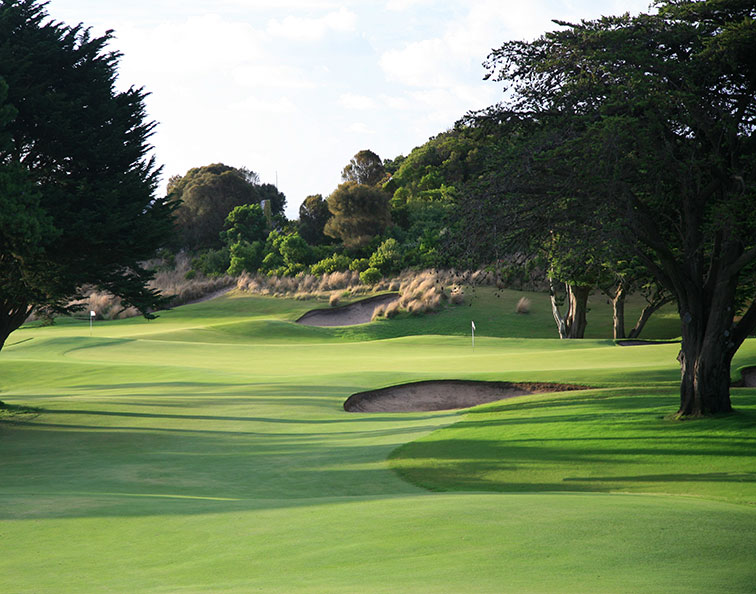
Old Course
Robert Trent Jones Jr is famous for creating dramatic golf and the world’s best players discovered this when they contested the 2015 US Open at his controversial coastal Washington project, Chambers Bay.
Gary Player accused Trent Jones Jr of having “one leg shorter than the other” while Henrik Stenson complained about “putting on broccoli”. But Trent Jones Jr’s flare for unique, ‘artificial’ golf is a feature of the Old course, where it’s believed he shifted more than one million tonnes of earth.
The Old’s aura stems from its remarkable setting among rolling sand dunes and towering cliffs. Here, some spectacular downhill tee shots and severe uphill approaches make for a golfing rollercoaster ride up sand hills, across gorges and down valleys and gullies.
Dramatic green complexes are a Trent Jones Jr signature and this places a premium on iron play. Shots not landing on the right tier or zone make two-putting an accomplishment, but at 5,873 metres from the members’ tees the Old’s length is forgiving.
The signature hole is the 139m seventh, rated among the country’s finest par 3s for its carry over a ravine and views over Bass Strait. But many other holes steal the show, including the par-5 eighth and par-3 16th.
The former brings big hitters back to the field with a sectioned fairway separated by gorges, and a clever uphill approach that is deceptively long. The 16th has a stunning green that sits brilliantly among the native bush, while the entrance to the shared green at the 14th stays in the memory long after your round.
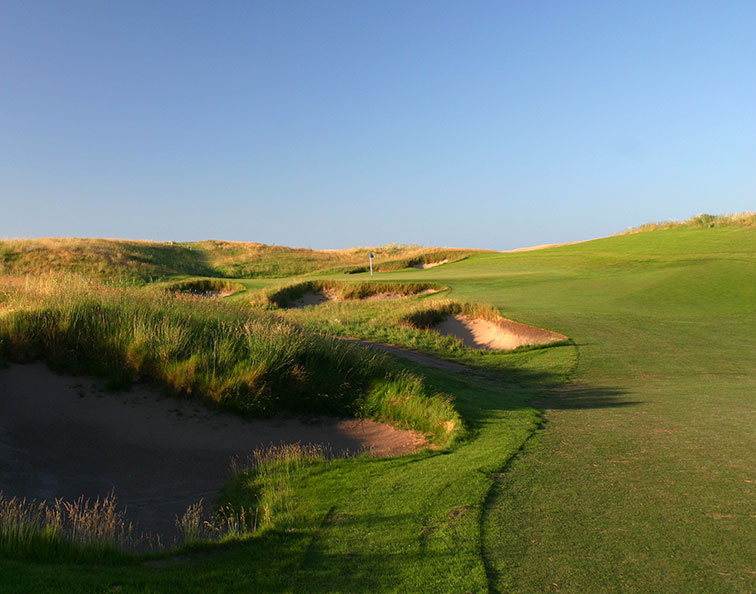
Moonah Course
Whether The National’s best 18 is Moonah or Old is a matter of preference. For many golfers (this writer included), a first visit to the Mornington only allows time for one round at The National before racing to one of the other world-class courses on the peninsula – and in my case, that was the Old.
But upon returning and playing Norman’s Moonah masterpiece, perceptions change and are at the mercy of your personal golfing palate. Regardless, Old and Moonah are difficult to separate and our rankings prove that at No.10 and No.11, respectively.
The two courses are golf’s most eye-catching example of chalk and cheese; where the Old is extravagant and may appear to be artificial in some areas, the Moonah is effortlessly gorgeous and feels as though it has been there for 100 years.
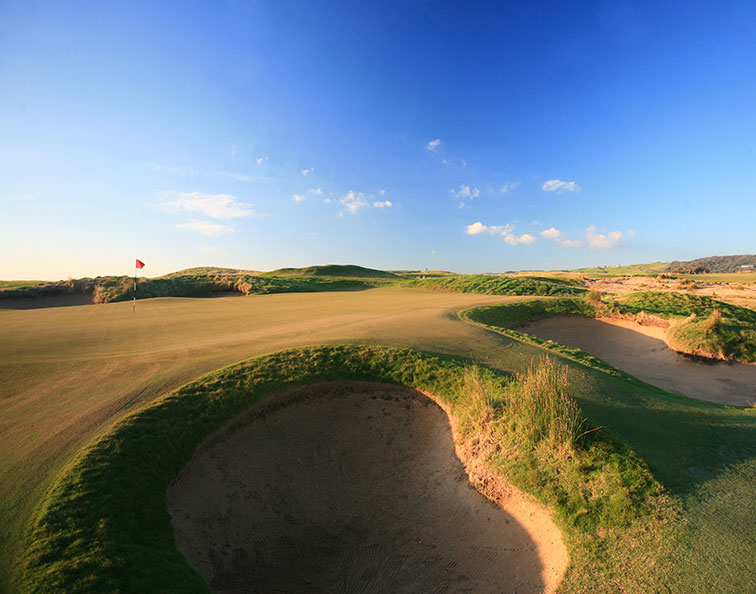
The Moonah course is a fine interpretation of the ‘least disturbance’ approach – every element from tee to green sits naturally on its foundations.
The bunkering is Moonah’s best feature, with dark sand and jagged edges creating an impression the traps were discovered, not created.
Fescue grasses on the egdes and faces of bunkers share the same ungroomed look as the newly-crowned world No.1 course, Royal County Down.
As intimidating as tee shots here are, they provide sweeping vistas of the magnificent property and are more generous than at first sight. Bold drives are rewarded with shelves on many of the fairways giving significant distance boosts to precise play.
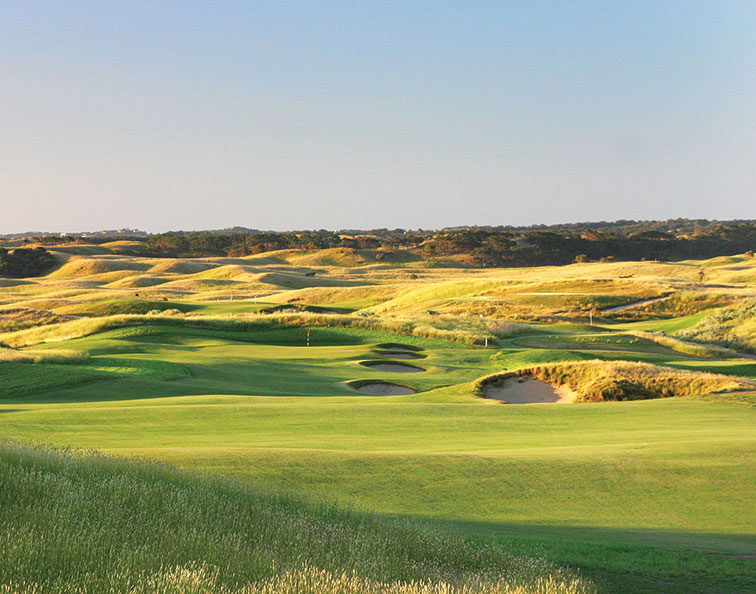
In the same fashion, approach shots look menacing from the fairway but reward accurate iron play and allow golfers to manage ‘good misses’ with forgiving swales and run-offs.
Running approaches are also an option with open fronts, but poor iron shots (whether or not they stay on the green) are heavily punished with lightning-quick putting surfaces, thick rough and treacherously deep bunkers.
Moonah’s conditioning complements the design philosophy as spongy, fescue-hybrid fairways ensure landing areas retain good drives. If they were of the hard-running couch variety … well, goodnight.
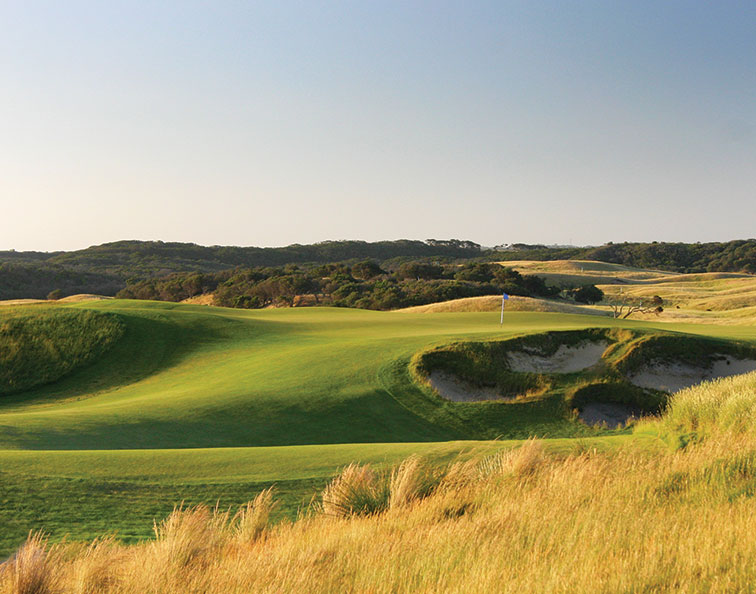
Ocean Course
When Peter Thomson and Mike Wolveridge were commissioned to construct the Ocean course at Cape Schanck, the five-times British Open champion and his design associate would have licked their lips at such an inspiring piece of land. Golfers get an understanding of this real estate gift at the first tee, where expansive views across Bass Strait and the Peninsula’s links land set the tone for the round.
The variety of endless sand hills allowed the duo to paint their philosophy on a dream canvas, and the genuine links experience was achieved through Thomson and Wolveridge’s traditional method of walking the site on foot with tees and turn-points, staking green sites as they appeared.
With the Old and Moonah setting such a high standard in design, the Ocean often falls victim to comparisons, despite being an enjoyable links offering which came in at No.38 in AGD’s Top 100 Courses for 2016.
Among its many delightful links features, a large sand quarry and beautiful green site at the fourth stand out, in addition to the punchbowl green complex at the 15th.
Like the Moonah course, this gem limits the effect of modern equipment advancements by reducing run on sloping fairways and this is achieved with a special Bermuda hybrid grass. The Ocean’s fairways meander through native grasses, with circular pot bunkers and raised green complexes creating an enjoyable round.
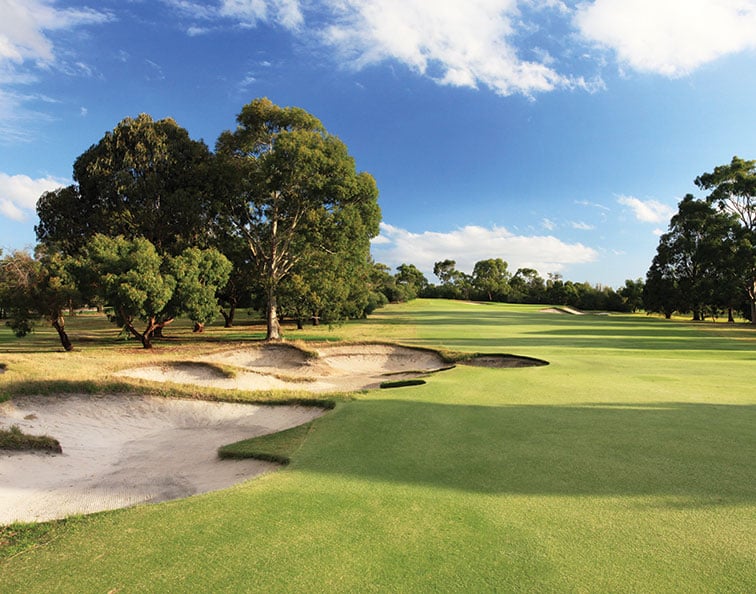
Long Island
While The National enjoys its picturesque setting on the Mornington Peninsula, management recognised the need to have a course closer to Melbourne’s CBD. So why not purchase a Sandbelt layout?
Members were ecstatic when The National merged with the Frankston north club, which has long been regarded as an underrated Sandbelt gem.
Long Island enjoys the subtle undulations and bunkering typical of iconic Sandbelt courses such as Kingston Heath. Tree-lined holes make full use of Long Island’s natural topography, which is bereft of spectacular scenery or ocean views.
From racecourse to golf course, Long Island was converted during the 1930s with the unheralded Gordon Oliver spearheading the design. Vern Morcom then updated Oliver’s greens and bunkering in the 1940s, along with a couple of key routing changes – most notably converting the par-5 ninth into two shorter holes.
While the routing and green complexes are more varied and sophisticated at Sandbelt courses like Royal Melbourne and Victoria Golf Club, Long Island is a terrific place to play golf and home to precisely the sort of terrain, vegetation, bunkering and turf conditioning that visitors to this region expect.
So is The National Golf Club Australia’s best golf facility? Blessed with so many quality golf courses Down Under, our Top 100 ranking proved it was a complicated puzzle.
Perhaps The National’s merger with Long Island was the final piece.
• For more information on memberships at The National, click here: Four Courses – One Extraordinary Membership
THE DETAILS
The National Golf Club
The Cups Drive, Cape Schanck VIC 3939
Phone: (03) 5988 6666
Website: www.nationalgolf.com.au
Email: [email protected]
For more information on a Golfing Great head to Visit Victoria.



